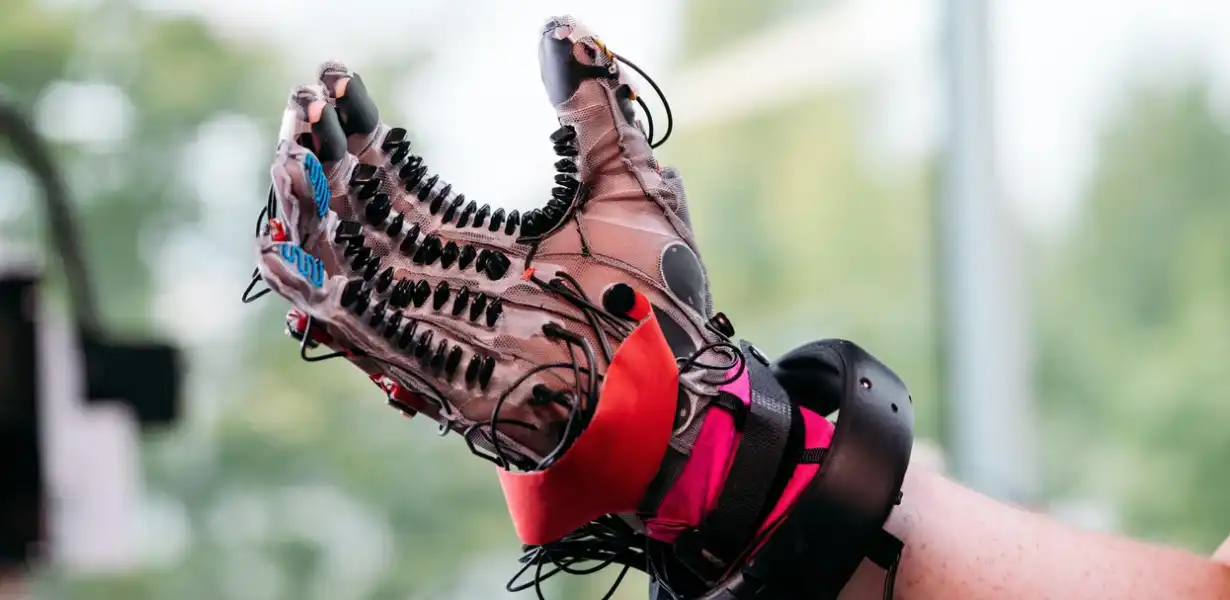
Haptic Feedback Prototyping: Touching the Future of Immersive User Experience
- Post
- August 7, 2023
- Prototyping, UI/UX Design, Web Design
- 0 Comments
In the ever-evolving landscape of user experience (UX) design, the emergence of haptic feedback prototyping has undeniably cast a transformative spell on the way we interact with technology. This blog delves deep into the realm of haptic feedback, exploring its significance, the tools that empower designers, and its impact on creating an immersive user experience. As a leading innovator in the field, we’re excited to guide you through this journey of tactile exploration.
Understanding Haptic Feedback: A Sensory Revolution
Haptic Feedback Unveiled
Haptic feedback, often referred to as kinesthetic communication, revolves around simulating the sense of touch through technology. It enriches user interactions by providing tactile sensations, further immersing users in the digital realm.
The Science Behind Haptic Feedback
Our sense of touch is remarkably complex. Haptic feedback mimics this complexity, involving various components such as actuators, sensors, and microcontrollers. These elements collaborate seamlessly to generate sensations ranging from a gentle vibration to a realistic texture.
Importance of Haptic Feedback in UX Design
Haptic feedback bridges the gap between physical and digital experiences, making interactions more intuitive and engaging. Its role in enhancing user satisfaction and usability cannot be understated, leading to better retention rates and improved overall experience.
Tools of the Trade: Haptic Prototyping Tools
Revolutionary Prototyping Tools
A wave of cutting-edge prototyping tools has surfaced to cater to designers aspiring to integrate haptic feedback seamlessly. Tools like “Hapto” and “TactiX” empower designers to craft realistic touch sensations without requiring extensive technical expertise.
Creating UX Prototypes with Haptic Feedback
With the aid of these tools, designers can now create interactive prototypes that mimic real-world touch interactions. For instance, a UI design prototyping can be enriched by simulating the sensation of pressing physical buttons or feeling the texture of materials.
Unlocking Creative Possibilities: Haptic Feedback Use Cases
Elevating Gaming Experiences
The gaming industry has embraced haptic feedback with open arms, delivering heightened realism and immersion. Imagine feeling the recoil of a virtual firearm or the rumble of a racing car engine as you navigate through a digital world.
Healthcare and Virtual Reality
In the realm of healthcare, haptic feedback has paved the way for intricate medical simulations. Medical students can practice surgical procedures in a risk-free environment, relying on touch feedback to refine their skills.
Automotive Advancements
Haptic feedback has significantly impacted the automotive sector, enhancing driver safety and comfort. Steering wheels that simulate road conditions or communicate potential dangers exemplify its integration into modern vehicles.
Overcoming Challenges: Designing Effective Haptic Experiences
Balancing Realism and User Experience
While creating lifelike touch sensations is essential, designers must strike a balance between realism and usability. Overwhelming users with intense vibrations can lead to discomfort, detracting from the overall experience.
Cross-Device Consistency
With the diversity of devices users interact with, ensuring consistent haptic experiences across different platforms poses a challenge. Designers must adapt their creations to varying hardware capabilities without compromising quality.
Commonly Asked Questions
Q1: What is haptic feedback?
A1: Haptic feedback involves simulating the sense of touch through technology, enriching digital interactions with tactile sensations.
Q2: How does haptic feedback enhance UX design?
A2: Haptic feedback bridges the gap between physical and digital experiences, making interactions more intuitive and engaging, thereby enhancing user satisfaction.
Q3: What are some popular haptic prototyping tools?
A3: Tools like “Hapto” and “TactiX” empower designers to create interactive prototypes with realistic touch sensations, enhancing the user experience.
Q4: What industries benefit from haptic feedback?
A4: Haptic feedback finds applications in gaming, healthcare, automotive, and more, enhancing realism and immersion across various sectors.
Q5: What challenges do designers face with haptic experiences?
A5: Designers must balance realism and usability while ensuring consistent haptic experiences across diverse devices.
Final Words
In the vast landscape of UX design, haptic feedback stands as a beacon of innovation. It unlocks uncharted dimensions of user interaction, bringing us closer to a future where digital experiences are as tactile and immersive as the real world. As pioneers in this realm, we embrace the challenge of crafting unforgettable experiences that touch both the heart and the senses. Stay tuned as we continue to shape the future of immersive user experiences through haptic feedback innovation.




